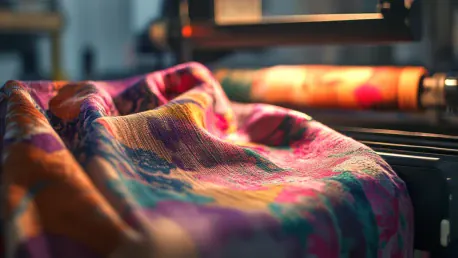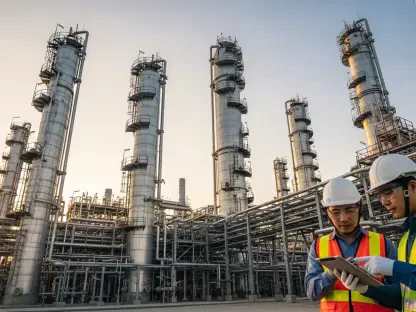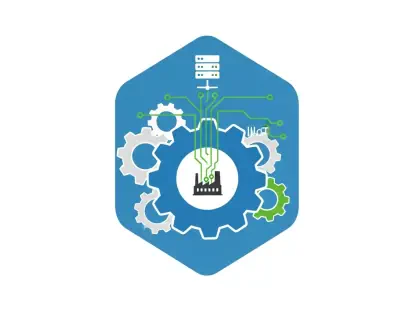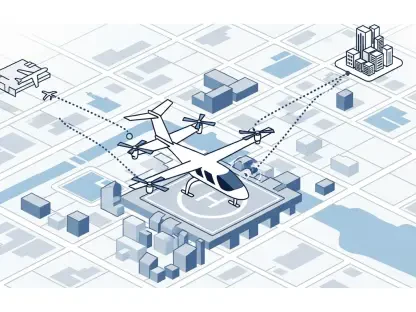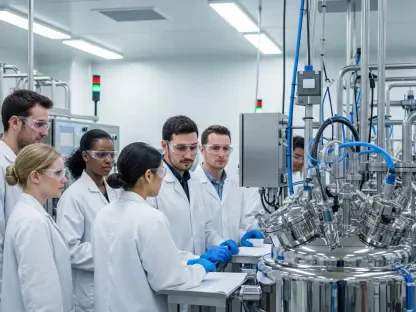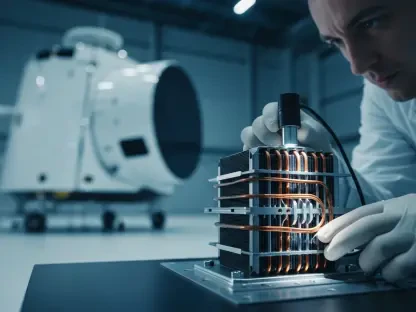As technological advancements continue to reshape various sectors, the textile industry stands as a prime example of how the integration of robotics and automation can revolutionize traditional manufacturing processes. This modernization has not only improved overall efficiency and precision but also fostered sustainability and customization, offering numerous benefits to both manufacturers and consumers. The role of automation and artificial intelligence in bolstering the textile industry’s capabilities has led to significant developments that meet the demands of a fast-evolving market.
Enhancing Efficiency and Precision in Textile Manufacturing
The Role of Robotics in Industry 4.0
The emergence of Industry 4.0 has brought about a paradigm shift in the textile industry, integrating robotics and automation to achieve unprecedented levels of manufacturing accuracy and efficiency. Robotics play a crucial role in reducing human errors and operational downtime, thereby streamlining the production process. Automated assembly lines equipped with sophisticated robotic arms can perform repetitive tasks with consistent precision, ensuring high-quality output and minimizing defects. This level of accuracy not only meets but surpasses the stringent quality standards demanded by modern markets.
Moreover, the incorporation of AI-driven systems into textile production lines has further enhanced real-time monitoring and adjustments. These systems can analyze vast amounts of data to make instant decisions, ensuring that the machinery operates at optimal conditions. By maintaining tight control over various parameters, such as temperature and tension, AI contributes to producing textiles that consistently meet exact specifications. This real-time adaptability translates to fewer production halts and a continuous workflow, making the entire manufacturing process more responsive and agile.
The Impact of Automation on Sustainability
One of the most significant benefits of integrating robotics and automation in textile manufacturing is the promotion of sustainability. Automated systems ensure precise material use, effectively reducing waste and conserving valuable resources. By accurately measuring and cutting fabrics, these machines minimize excess material, which traditionally would have contributed to waste. This precision not only optimizes material usage but also aligns with environmental conservation efforts, an essential consideration in today’s eco-conscious world.
Additionally, modern textile factories equipped with automation have implemented systems that facilitate the recycling of leftover fabric. These automated processes can sort, shred, and repurpose fabric remnants, creating new materials that can be reintroduced into the production cycle. This approach significantly reduces the amount of waste sent to landfills and lowers the industry’s overall carbon footprint. By embracing these eco-friendly practices, textile manufacturers can make strides toward more sustainable operations while maintaining high production levels.
The Advantages of Refurbished Machinery
Cost-Effective Solutions for Smaller Businesses
The use of refurbished machinery in textile manufacturing presents a cost-effective solution, particularly for smaller businesses or those new to automation. Investing in second-hand machinery can provide the performance of new equipment without the prohibitive costs associated with brand-new purchases. This strategy allows smaller manufacturers to access high-quality technology, leveling the playing field and enhancing their competitiveness. The affordability of refurbished machines enables companies to allocate resources more efficiently, potentially investing saved funds into other critical areas such as product development and marketing.
Furthermore, adopting second-hand machinery aligns with the principles of the circular economy, which emphasizes extending the lifespan of products and reducing the need for new resources. By repurposing existing equipment, manufacturers not only benefit financially but also contribute to sustainable practices. This approach mitigates the environmental impact associated with manufacturing new machinery and underscores a commitment to resource conservation. In the long run, this strategy proves advantageous for businesses seeking to balance economic viability with responsible environmental stewardship.
Supporting Sustainability Through Refurbished Equipment
Refurbished machinery plays a notable role in promoting sustainability within the textile industry. By extending the usability of existing equipment, manufacturers reduce the demand for new resources, which in turn decreases the environmental burden associated with producing and disposing of new machines. This practice supports the industry’s shift toward more sustainable operations, reflecting a broader commitment to environmental responsibility. Utilizing refurbished equipment aligns with eco-friendly initiatives, demonstrating that manufacturers can pursue excellence without compromising their environmental ethos.
In addition to reducing resource consumption, refurbished machinery often comes with a lower carbon footprint. The process of refurbishing typically involves cleaning, repairing, and upgrading existing equipment, requiring significantly less energy than producing new machinery from raw materials. As a result, using refurbished machines contributes to a reduction in greenhouse gas emissions. By choosing this sustainable option, textile manufacturers can maintain their operational effectiveness while adhering to green principles, ultimately supporting the industry’s overall goal of minimizing its environmental impact.
Customization and Consumer Demand
Catering to Consumer Demand for Personalization
In today’s market, consumer demand for personalized products has reached unprecedented levels, and the integration of robotics and automation in textile manufacturing has paved the way for customized production. Automated systems equipped with advanced software can instantly adjust stitching patterns, fabric types, and colors, allowing for the creation of unique, made-to-order textiles without requiring separate production lines. This capability not only enhances the variety of products available to consumers but also meets their high expectations for individualized items tailored to their preferences.
Manufacturers can leverage design software that predicts style trends and consumer preferences based on previous data, enabling them to stay ahead of market demands. By analyzing trends and customer feedback, these systems can rapidly update designs and introduce new products that align with current tastes. This level of responsiveness positions manufacturers at the forefront of the industry, allowing them to offer consumers a more personalized experience. As a result, the ability to create bespoke textiles quickly becomes a competitive advantage, catering to the ever-changing desires of a diverse customer base.
The Benefits of Rapid Design Updates
As technological advancements continue to transform different sectors, the textile industry serves as a prime illustration of how integrating robotics and automation can revolutionize traditional manufacturing processes. This modernization has not only boosted overall efficiency and precision but also promoted sustainability and customization, yielding numerous benefits for both manufacturers and consumers. Automation and artificial intelligence have played a crucial role in enhancing the textile industry’s capabilities, leading to remarkable developments that cater to the rapidly evolving market demands. Enhanced automated systems allow for quicker production times and reduced errors. Moreover, they enable personalized products that meet specific consumer preferences, contributing to a more dynamic market. Sustainable practices, such as reducing waste and optimizing resource use, are more attainable with these advancements, reflecting a more eco-friendly approach. The textile industry’s embrace of these technologies exemplifies how innovation can drive progress and adapt to modern needs.
